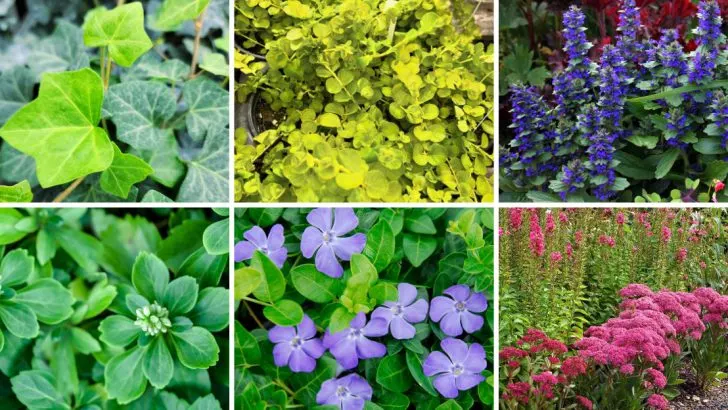Some ground covers are like that one guest who overstays their welcome—showing up charming, then slowly spreading until they’ve taken over everything. Others are a little more polite, staying neatly where you plant them and minding their own business. Knowing which is which can save you a lot of time (and frustration) in the garden.
In this guide, we’ve rounded up eight ground covers that have a serious tendency to take over—and not always in a bad way—plus eight that are reliably well-behaved. Depending on what kind of space you’re working with, you might be looking for either. Sometimes you need a plant that covers ground fast and fills in gaps; other times, you want something tidy and contained. Here’s what to know before you let them loose in your yard.
English Ivy
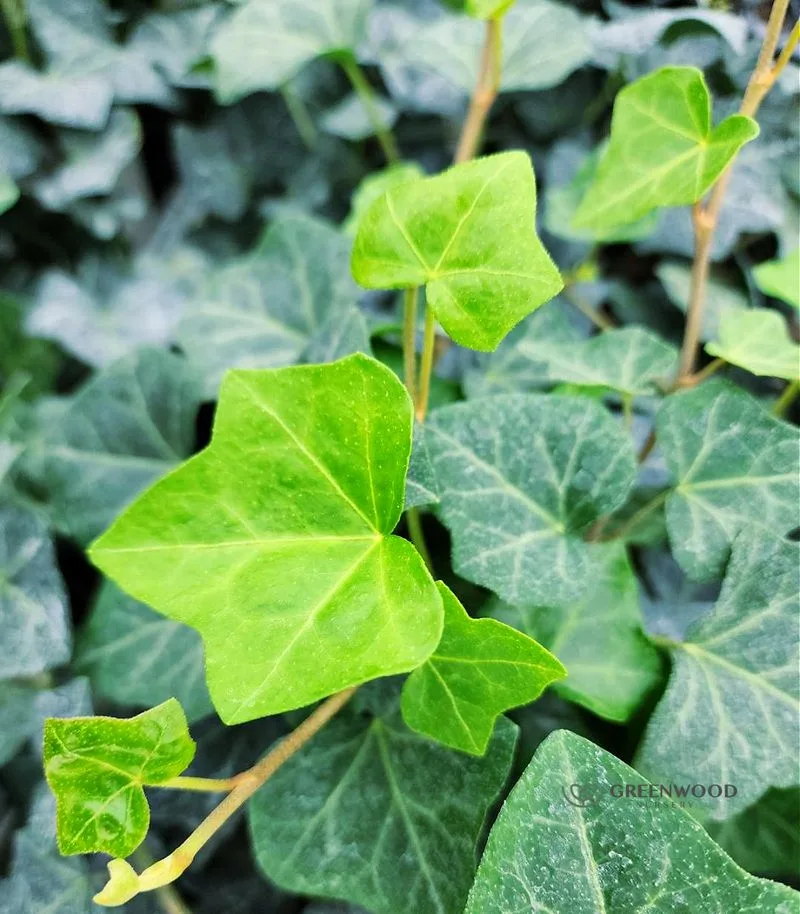
English Ivy, a classic choice for those wanting lush, verdant greenery, can be a bit of a wild child in the garden. Its tenacious tendrils can climb and cover almost anything in its path.
Once established, it spreads rapidly, creating a carpet of dense foliage. While it offers excellent ground coverage, it’s important to keep it in check.
If left unattended, English Ivy can overrun other plants and even damage structures. Regular pruning is essential if you want to contain its ambitious growth. Despite its reputation, it remains a popular choice for its evergreen charm.
Creeping Jenny

Creeping Jenny is known for its radiant golden-green leaves that brighten any garden. It has a knack for spreading quickly, often taking over areas if not carefully controlled.
This plant thrives in moist environments, making it perfect for water gardens or damp spots. Its low-growing habit allows it to blanket the ground beautifully.
However, its vigor can be overwhelming for other plants. Strategic placement and regular maintenance can help manage its exuberant nature. Loved for its vibrant color, Creeping Jenny is a favorite among gardeners seeking ground cover with personality.
Pachysandra
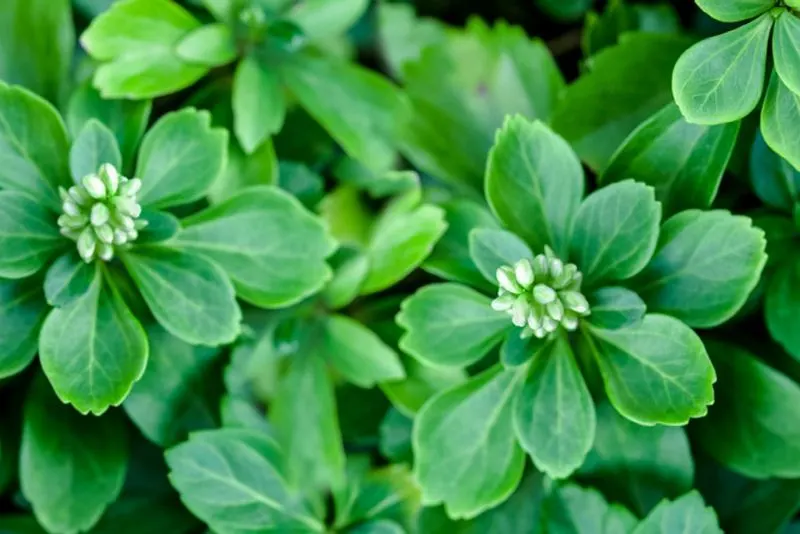
Pachysandra, with its glossy leaves and ability to thrive in shade, is a go-to for many gardeners. It’s an aggressive spreader, often filling woodland floors or shaded areas with ease.
Its dense growth pattern can suppress weeds, making it a practical choice for less sunny spots. However, its vigorous nature can outcompete other plants if not controlled.
Regular trimming can keep Pachysandra in check, ensuring it doesn’t crowd out the garden’s diversity. Despite its spread, it remains favored for its lush, evergreen appeal, particularly in shaded locations.
Vinca Minor (Periwinkle)
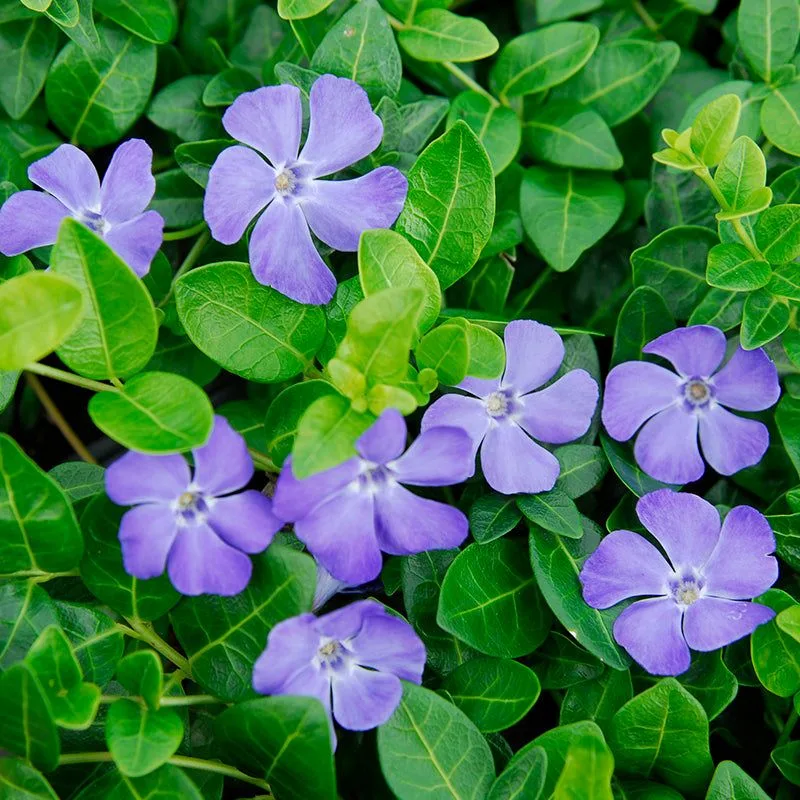
Vinca Minor, also known as Periwinkle, captivates with its delicate purple blooms and evergreen foliage. It’s a vigorous ground cover that spreads quickly, even in challenging terrains.
This plant’s trailing stems root at nodes, creating a dense mat that can suppress unwanted growth. While attractive, its invasive nature can overshadow more delicate plantings.
Gardeners often use it for erosion control on slopes, but must be cautious of its spreading tendency. With its charming flowers and hardy foliage, Vinca Minor remains a popular choice, albeit with mindful management.
Bamboo

Bamboo, with its towering beauty and quick growth, is a fascinating addition to any garden. However, it is notorious for its aggressive spreading habits.
Once established, bamboo can quickly take over, spreading underground via rhizomes. This rapid expansion can disrupt other plants and structures if not managed.
Containing bamboo requires careful planning, such as installing barriers or regular cutting back. Despite its invasiveness, bamboo offers a unique visual appeal and is valued for its versatility, from creating privacy screens to providing materials for crafting.
Mint

Mint is well-loved for its invigorating scent and culinary uses, but it’s a garden rebel with its spreading roots. Once planted, mint can rapidly colonize an area, overshadowing neighboring plants.
Its underground rhizomes are the key to its relentless spread, making it essential to plant mint in containers or isolated spots.
While its invasive nature is a challenge, mint’s refreshing fragrance and uses in cooking and teas make it a valuable addition to the garden. Just ensure it has its own space, and it will reward you with aromatic delights.
Ajuga

Ajuga, often called Bugleweed, enchants with its lovely blue flower spikes and rich foliage. It’s a fast spreader, covering ground with a dense mat of leaves.
Particularly effective in shady areas, Ajuga can outgrow everything in its path if left unchecked. Its lush foliage suppresses weeds, but may also smother less competitive plants.
Gardeners cherish Ajuga for its charming blooms and ability to thrive in tough conditions. Regular maintenance will keep its growth in balance, allowing it to add beauty without taking over entirely.
Liriope
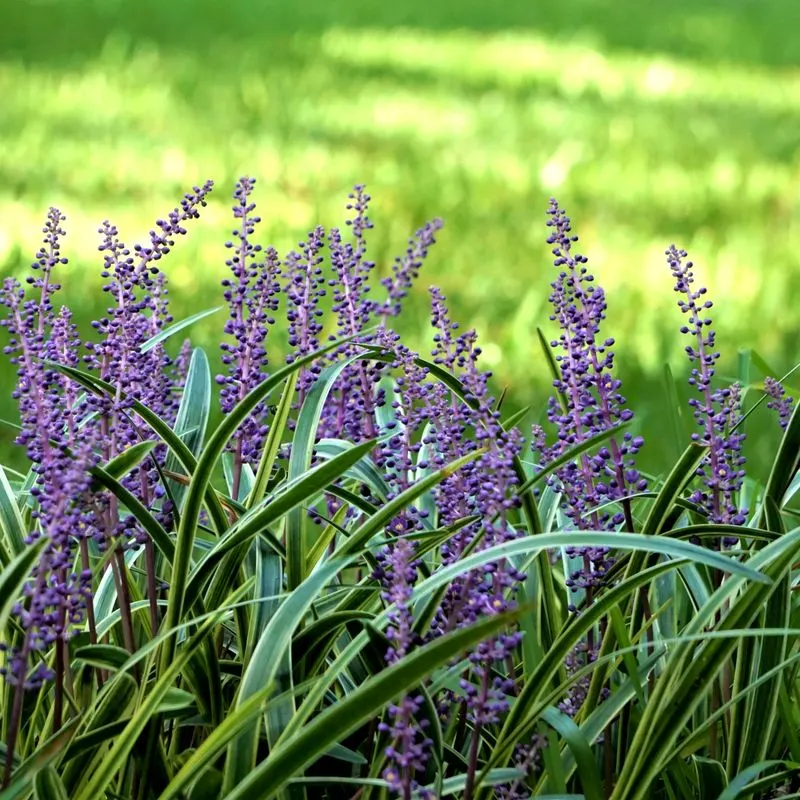
Liriope, known for its grass-like leaves and dainty purple flowers, is a versatile ground cover. While generally well-behaved, it can spread robustly in favorable conditions.
Its clumping nature helps it stay in place, but it can expand aggressively if not monitored. Liriope is excellent for borders or filling large areas.
Its attractive appearance and resilience make it a favorite in many gardens. With occasional trimming, it remains a controlled and beautiful element in landscaping, offering a touch of elegance without overwhelming the garden.
Thyme
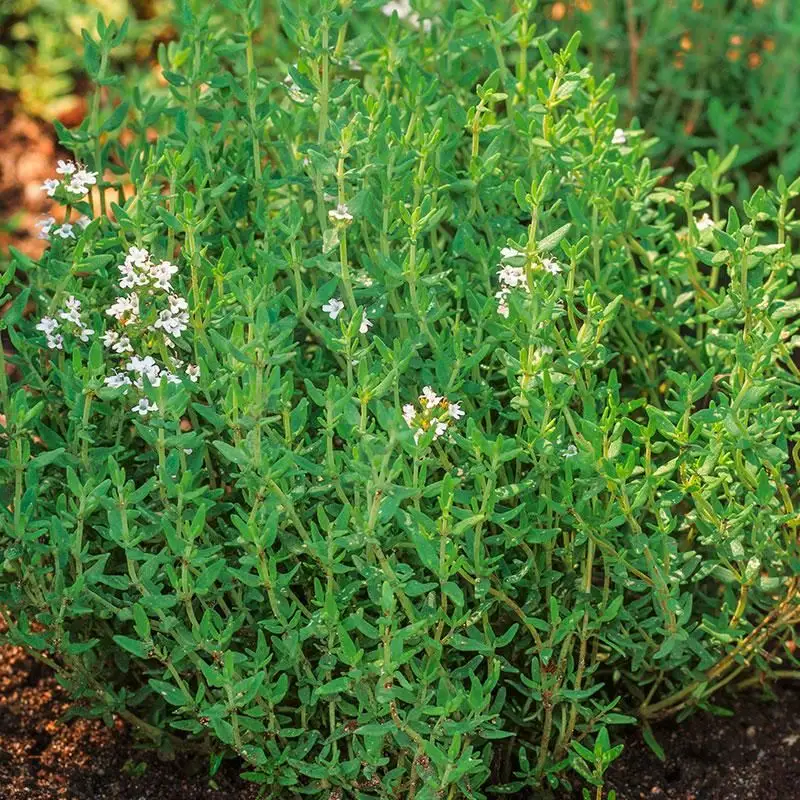
Thyme, a delightful herb, captivates with its aromatic foliage and tiny, charming flowers. Unlike other ground covers, Thyme is content to stay where it’s planted.
Its low-growing habit makes it ideal for borders or rock gardens, where it adds a touch of rustic charm. Thyme’s fragrance is a bonus, making it a sensory delight.
This plant thrives in well-drained soil and sunny spots, requiring minimal maintenance. Its restrained growth and culinary uses make it a gardener’s favorite, offering both beauty and practicality without the risk of taking over.
Mondo Grass
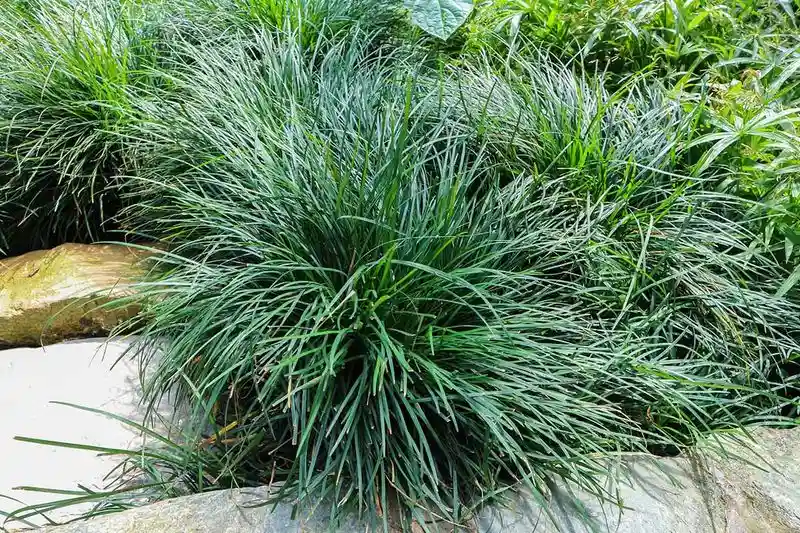
Mondo Grass offers a refined touch to garden landscapes with its slender, dark green blades. It’s perfect for creating neat borders or adding texture to beds.
This plant grows slowly and stays put, making it a low-maintenance option for those seeking a tidy garden. Mondo Grass does well in both sun and shade, making it versatile.
Its compact form and evergreen nature provide year-round interest without the chaos of aggressive spreaders. Gardeners appreciate its subtle elegance, offering structure without overshadowing other plants.
Sedum
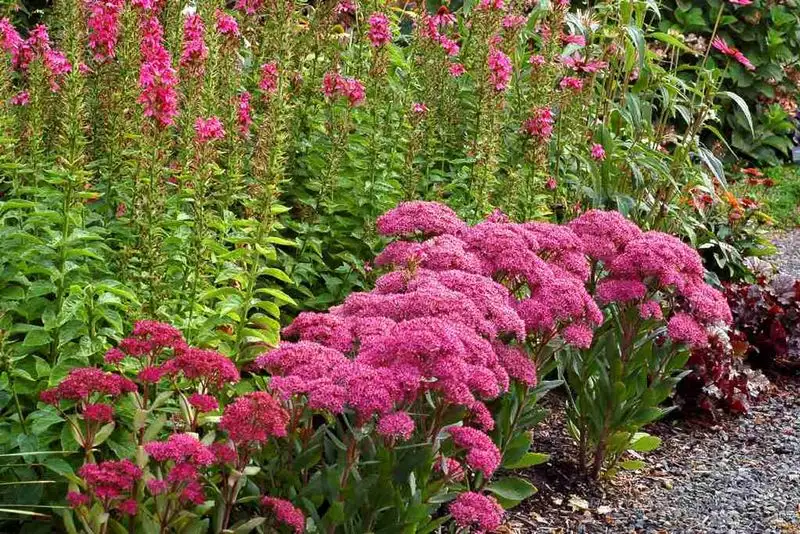
Sedum, or Stonecrop, is a charming succulent that remains neatly in its designated spot. Its thick, fleshy leaves and starry flowers make it a standout in rock gardens.
Sedum thrives in well-drained soil and sunny locations, requiring little care once established. Its drought tolerance adds to its appeal, making it a practical choice for dry areas.
Gardeners love Sedum for its ability to add color and texture without overtaking other plants. Its restrained growth and captivating appearance make it an ideal choice for those who want beauty and order in their gardens.
Lamb’s Ear
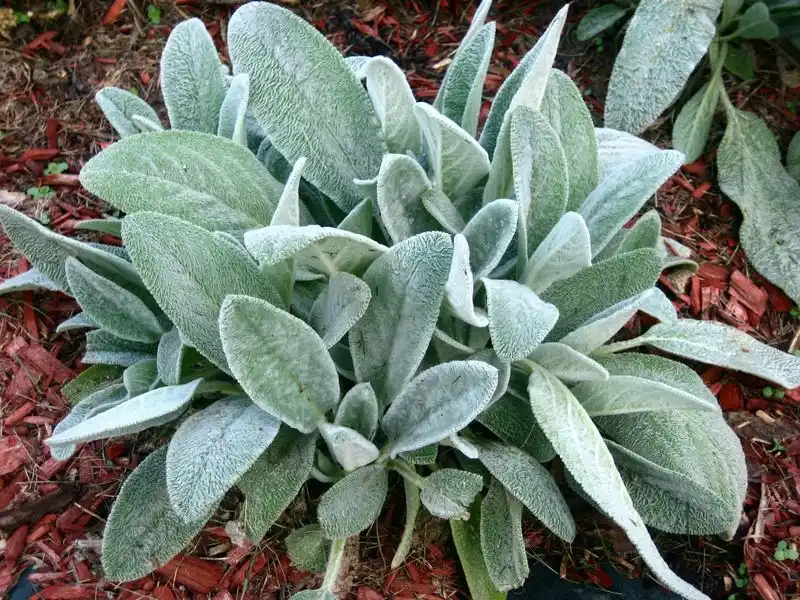
Lamb’s Ear, with its soft, silvery foliage, is a treasured plant for sensory gardens. Its fuzzy leaves create a soothing tactile and visual experience.
This plant spreads slowly, making it a manageable choice for garden borders or pathways. Lamb’s Ear prefers sunny spots and well-drained soil.
Its unique texture and gentle growth pattern make it a beloved choice for adding subtle charm without overwhelming nearby plants. Gardeners appreciate its calm presence and the soft touch it brings to outdoor spaces.
Sweet Woodruff
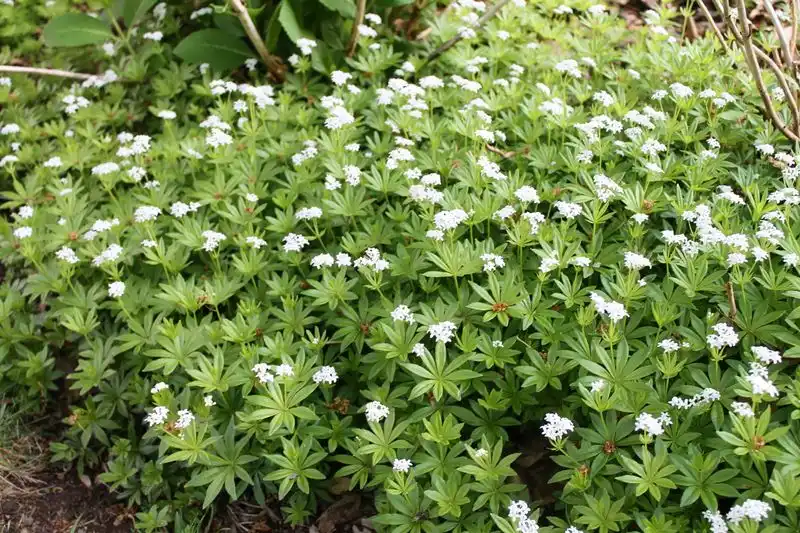
Sweet Woodruff, known for its delicate white flowers and fragrant leaves, adds a touch of elegance to shaded areas. It’s a well-mannered ground cover that stays contained.
This plant prefers moist, shaded spots, where it forms a soft carpet of foliage. Its subtle fragrance and dainty appearance make it a favorite for woodland gardens.
Gardeners appreciate Sweet Woodruff for its controlled growth and ability to complement more vibrant plantings. It offers a serene touch without the risk of encroaching on other plants, making it a delightful addition to any garden.
Hens and Chicks

Hens and Chicks, with their charming rosette shapes, are a delightful addition to gardens. These succulents stay neatly in place, providing visual interest without spreading wildly.
Ideal for rock gardens or containers, they thrive in sunny spots with well-drained soil. Their low-maintenance nature and drought tolerance make them a practical choice.
Gardeners love Hens and Chicks for their unique appearance and ability to add structure without overwhelming other plantings. Their quirky forms and restrained growth offer a playful yet orderly touch to outdoor spaces.
Corsican Mint
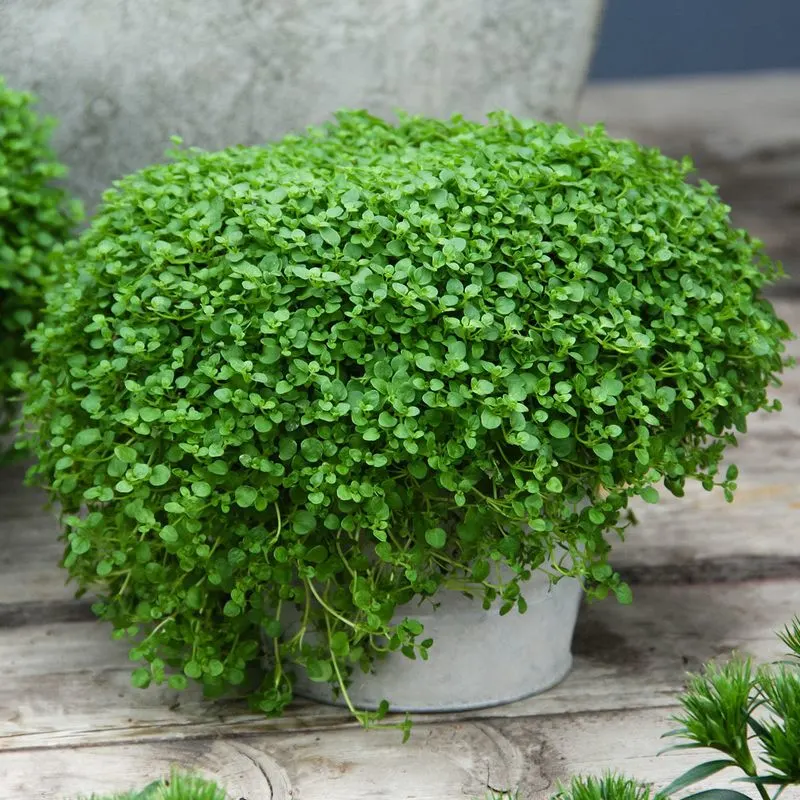
Corsican Mint, with its tiny leaves and delightful fragrance, offers a charming ground cover option for smaller areas. It forms a compact carpet, staying where you plant it.
This plant thrives in moist, shaded environments, making it perfect for creeping between stepping stones or lining garden paths. Its subtle scent adds a sensory delight to any garden.
Gardeners appreciate Corsican Mint for its ability to fill gaps without overtaking space. Its neat growth and aromatic presence make it a beloved choice for adding a touch of whimsy and order to outdoor areas.
Barrenwort
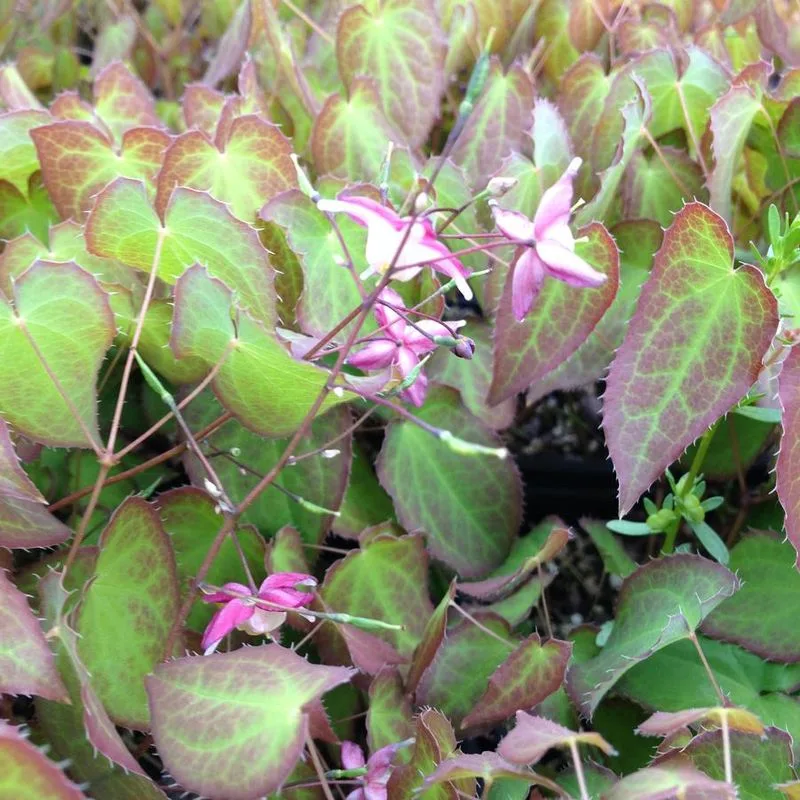
Barrenwort, also known as Epimedium, enchants with its delicate flowers and heart-shaped leaves. It’s a ground cover that stays put, adding a fairy-tale touch to shaded gardens.
This plant prefers moist, well-drained soil and is perfect for woodland areas. Its slow growth and charming appearance make it a treasured addition.
Gardeners love Barrenwort for its ability to complement other plantings without overpowering them. Its unique beauty and restrained growth make it an ideal choice for those seeking elegance and order in their gardens.

